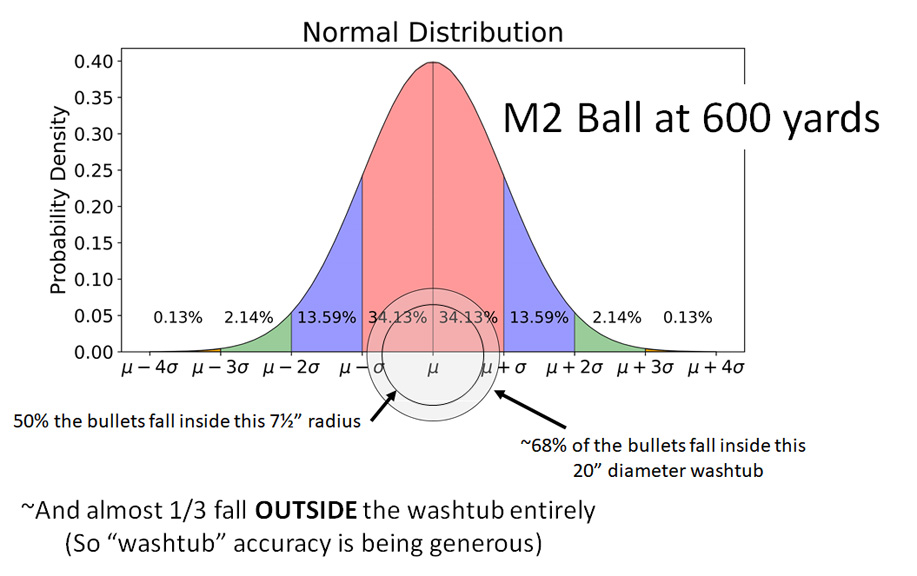....... and what it tell you about the accuracy it represents?
Accuracy spec for arsenal 7.62 M118 match ammo was 3.5" mean radius at 600 yards.
The 1965 National Match lot's 270 shot test group had a 1.9" mean radius at 600.
The Extreme Spread was about 10 inches.
About 40% of the shots were inside 4 inches ES.
About 70% were inside 7 inches ES, 30% of all shots between 4 and 7 inches ES.
Near 90% inside an ES of 9 inches, 20% of all shots between 7 and 9 inches ES.
100% inside the 10 inch ES, 27 shots, 10% of all 270 shots, in the outer 1 inch ES.
Accuracy spec for arsenal 7.62 M118 match ammo was 3.5" mean radius at 600 yards.
The 1965 National Match lot's 270 shot test group had a 1.9" mean radius at 600.
The Extreme Spread was about 10 inches.
About 40% of the shots were inside 4 inches ES.
About 70% were inside 7 inches ES, 30% of all shots between 4 and 7 inches ES.
Near 90% inside an ES of 9 inches, 20% of all shots between 7 and 9 inches ES.
100% inside the 10 inch ES, 27 shots, 10% of all 270 shots, in the outer 1 inch ES.

